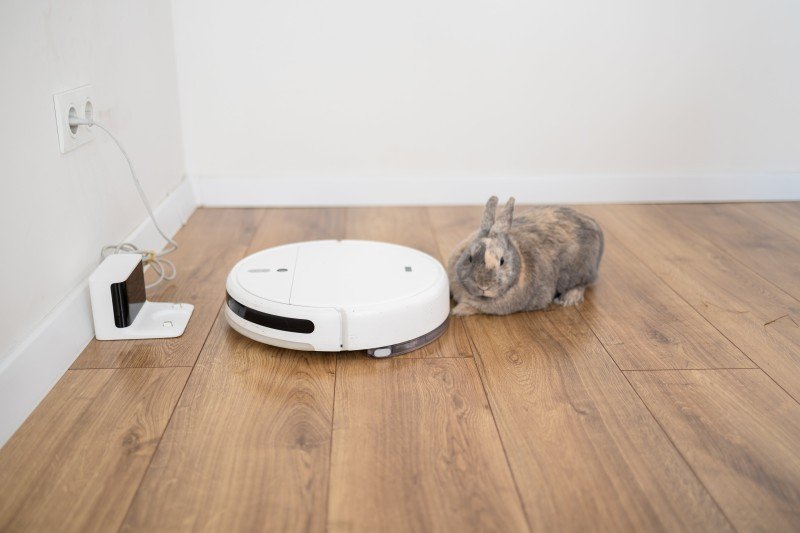The Rise of Autonomous Vacuums: Revolutionizing Home Cleaning
In the age of technology, family chores are ending up being significantly automated, and one of the most noteworthy developments in this realm is the autonomous vacuum. These intelligent cleaning robotics are designed to ease the drudgery of conventional vacuuming, making them popular amongst time-strapped homes. This short article checks out the development, performance, advantages, and limitations of autonomous vacuums, in addition to a contrast of a few of the leading designs on the market today.
What is an Autonomous Vacuum?
An autonomous vacuum, also known as a robotic vacuum cleaner, is a little, automated device that browses through your home to tidy floors without human intervention. Geared up with sensing units, video cameras, and advanced software application, these vacuums can find barriers, prevent stairs, and enhance cleaning paths. They usually operate from a rechargeable battery, going back to their charging stations when their power is low or when cleaning jobs are finished.
Key Features of Autonomous Vacuums
Smart Navigation:
- Utilizes sensors and algorithms to map the environment.
- Can navigate complex designs and avoid barriers.
Scheduling:
- Allows users to set cleaning times.
- Can run when your home is empty, ensuring minimal disturbance.
Connectivity:
- Many designs connect to Wi-Fi, enabling app control and integration with clever home systems.
- Users can customize settings, check cleaning status, and receive notices through mobile applications.
Suction Power:
- Varies between designs; some offer adjustable suction settings for different floor types.
- High-end designs feature powerful suction efficient in getting family pet hair and deep dirt.
Floor Type Adaptability:
- Capable of cleaning carpets, wood, tiles, and more.
- Particular models concentrate on customized cleaning for several surface areas.
The Advantages of Using Autonomous Vacuums
1. Time-Saving
One of the most significant advantages of autonomous vacuums is the quantity of time they conserve. Rather than investing hours pushing a traditional vacuum, house owners can set robotic vacuums to tidy while they are participated in other activities.
2. Constant Cleaning Schedule
With the ability to arrange cleansings, these vacuums guarantee that areas are frequently cleaned up, resulting in a cleaner home in general. Routine cleaning helps keep indoor air quality, particularly for households with allergic reactions or asthma.
3. Smart Home Integration
Lots of autonomous vacuums can be integrated with wise home systems for seamless operation. House owners can control their vacuums via voice commands through gadgets like Amazon Alexa or Google Assistant, boosting user convenience.
4. Compact Design
The slim profile of these devices enables them to clean up under furniture, such as couches and beds, where conventional vacuums typically can not reach.
5. Pet-Friendly
For family pet owners, autonomous vacuums can be a game-changer, as they are frequently equipped with specialized features for choosing up animal hair and dander, contributing to a cleaner home environment.
Limitations of Autonomous Vacuums
Regardless of their many advantages, autonomous vacuums also have constraints:
1. Restricted Deep Cleaning
While these vacuums efficiently preserve tidiness, they may not change the effectiveness of a deep tidy provided by traditional vacuums, especially for heavily stained locations.
2. Capability Constraints
A lot of autonomous vacuums featured little dust bins that require to be cleared often, especially in bigger homes or homes with family pets. This can be an inconvenience for some users.
3. Navigation Challenges
Although navigation technology is constantly enhancing, some models might fight with specific designs, particularly complicated areas with various challenges or extremely small spaces.
4. Price Point
While rates have ended up being more available, high-end designs can still be rather pricey, presenting a barrier for some customers.
Comparison of Top Autonomous Vacuum Models
| Design | Smart Features | Battery Life | Suction Strength | Price Range |
|---|---|---|---|---|
| iRobot Roomba 980 | App Control, Voice Assistant | 120 minutes | 1700 Pa | ₤ 700 - ₤ 900 |
| Roborock S6 MaxV | Advanced Mapping, Connectable | 180 minutes | 2500 Pa | ₤ 600 - ₤ 800 |
| Ecovacs Deebot Ozmo | Mopping, Smart Home | 110 minutes | 1500 Pa | ₤ 450 - ₤ 700 |
| Neato Botvac D7 | Laser Navigation, Custom Zones | 120 minutes | 2000 Pa | ₤ 800 - ₤ 900 |
| Shark IQ Robot | Self-Emptying Base, Smart Map | 90 minutes | 1500 Pa | ₤ 400 - ₤ 600 |
Significant Takeaways
- Smart Features: Consumers ought to prioritize designs offering robust smart functions for benefit and efficiency.
- Battery Life: A longer battery life is useful for larger living areas.
- Suction Strength: Depending on household requirements, varying suction power can substantially impact cleaning effectiveness.
FAQs about Autonomous Vacuums
Q1: How do I preserve my autonomous vacuum?
A: Regular maintenance includes cleaning the brushes, emptying the dustbin, and checking for blockages. In addition, keeping the sensors clean up will assist keep navigation accuracy.
Q2: Can robotic vacuums tidy rugs and carpets?
A: Yes, numerous robotic vacuums are designed to successfully tidy both hard surfaces and carpets. However, suction power might differ based upon the design.
Q3: Do robotic vacuums need Wi-Fi?
A: While lots of autonomous vacuums benefit from Wi-Fi connection for app control and updates, some designs can run separately without a wireless connection.
Q4: How often should I run my robotic vacuum?
A: It depends upon your living circumstance, however running it several times a week is frequently suggested, especially for homes with animals.
In conclusion, autonomous vacuums represent a considerable development in home cleaning technology, promising benefit and performance. While Ramon Mcamis may not completely change traditional vacuum cleaners, they are certainly practical in preserving a tidy living environment. As innovation continues to evolve, the future of home cleaning looks appealing, and these devices are at the forefront of the transformation.

